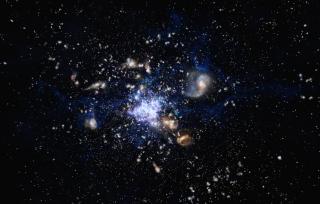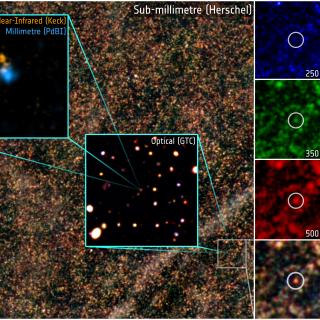Bibcode
Pierel, J. D. R.; Newman, A. B.; Dhawan, S.; Gu, M.; Joshi, B. A.; Li, T.; Schuldt, S.; Strolger, L. G.; Suyu, S. H.; Caminha, G. B.; Cohen, S. H.; Diego, J. M.; DŚilva, J. C. J.; Ertl, S.; Frye, B. L.; Granata, G.; Grillo, C.; Koekemoer, A. M.; Li, J.; Robotham, A.; Summers, J.; Treu, T.; Windhorst, R. A.; Zitrin, A.; Agarwal, S.; Agrawal, A.; Arendse, N.; Belli, S.; Burns, C.; Cañameras, R.; Chakrabarti, S.; Chen, W.; Collett, T. E.; Coulter, D. A.; Ellis, R. S.; Engesser, M.; Foo, N.; Fox, O. D.; Gall, C.; Garuda, N.; Gezari, S.; Gomez, S.; Glazebrook, K.; Hjorth, J.; Huang, X.; Jha, S. W.; Kamieneski, P. S.; Kelly, P.; Larison, C.; Moustakas, L. A.; Pascale, M.; Pérez-Fournon, I.; Petrushevska, T.; Poidevin, F.; Rest, A.; Shahbandeh, M.; Shajib, A. J.; Siebert, M.; Storfer, C.; Talbot, M.; Wang, Q.; Wevers, T.; Zenati, Y.
Referencia bibliográfica
The Astrophysical Journal
Fecha de publicación:
6
2024
Revista
Número de citas
56
Número de citas referidas
40
Descripción
A bright (m F150W,AB = 24 mag), z = 1.95 supernova (SN) candidate was discovered in JWST/NIRCam imaging acquired on 2023 November 17. The SN is quintuply imaged as a result of strong gravitational lensing by a foreground galaxy cluster, detected in three locations, and remarkably is the second lensed SN found in the same host galaxy. The previous lensed SN was called "Requiem," and therefore the new SN is named "Encore." This makes the MACS J0138.0‑2155 cluster the first known system to produce more than one multiply imaged SN. Moreover, both SN Requiem and SN Encore are Type Ia SNe (SNe Ia), making this the most distant case of a galaxy hosting two SNe Ia. Using parametric host fitting, we determine the probability of detecting two SNe Ia in this host galaxy over a ∼10 yr window to be ≈3%. These observations have the potential to yield a Hubble constant (H 0) measurement with ∼10% precision, only the third lensed SN capable of such a result, using the three visible images of the SN. Both SN Requiem and SN Encore have a fourth image that is expected to appear within a few years of ∼2030, providing an unprecedented baseline for time-delay cosmography.
Proyectos relacionados

Gas Molecular y Polvo en Galacias através del Tiempo Cósmico
Dos cuestiones fundamentales en la Astrofísica son la conversión de gas molecuar en estrellas y cómo este proceso físico depende del entorno en todas las escalas, desde sistemas planetarios, cúmulos estelares, galaxias hasta cúmulos de galaxias. El objectivo principal de este proyecto es el de estudiar la formación y evolución de galaxias a partir
Helmut
Dannerbauer

Formación y Evolución de Galaxias: Observaciones Infrarrojas y en otras Longitudes de Onda
Este grupo desarrolla varios proyectos extragalácticos en diferentes rangos del espectro electromagnético utilizando satélites y telescopios en tierra para estudiar la evolución cosmológica de las galaxias y el origen de la actividad nuclear en galaxias activas. En el aspecto instrumental, el grupo forma parte del consorcio internacional que ha
Ismael
Pérez Fournon